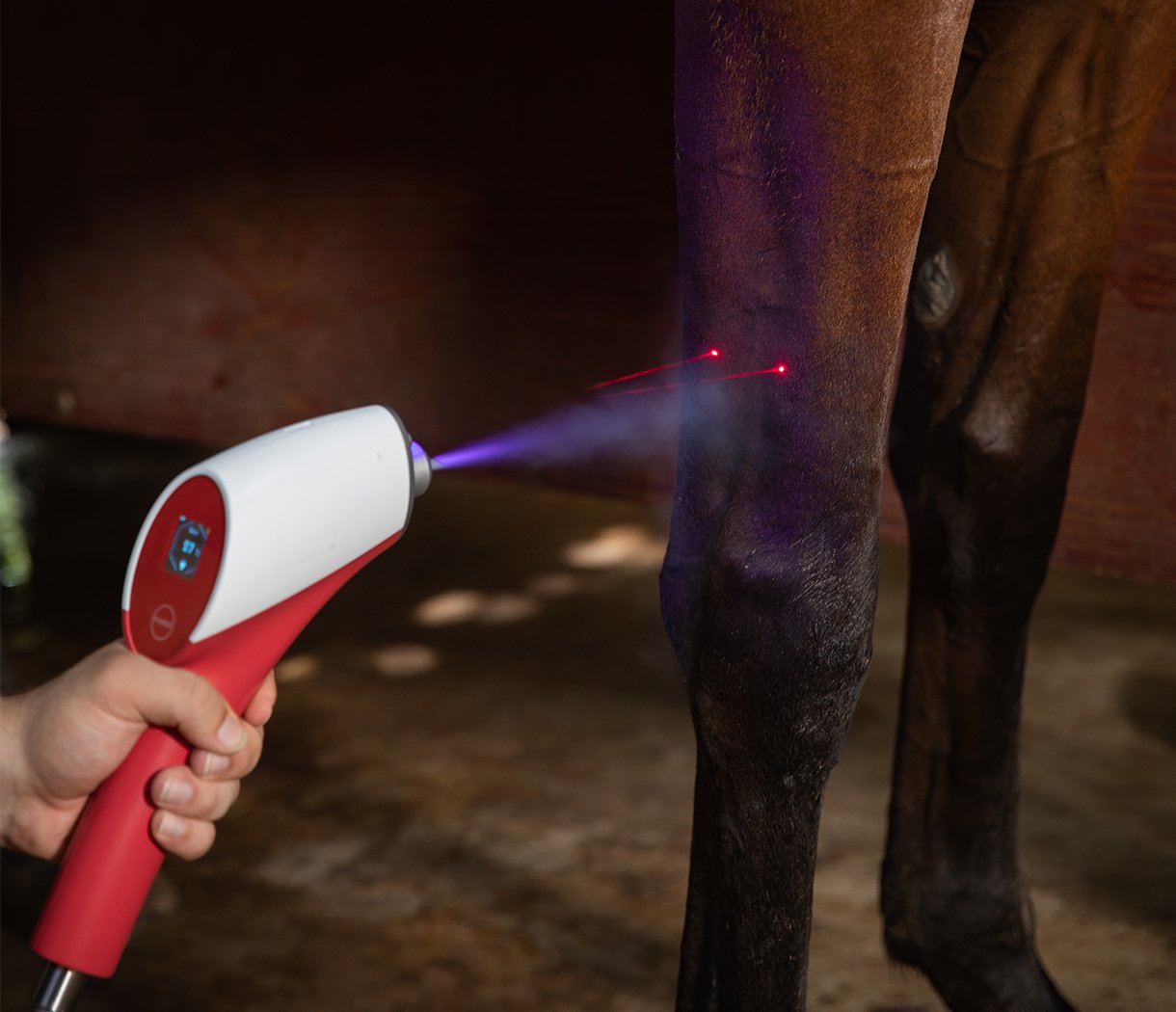Why Fetlock Recovery Needs to be Turbocharged
Fetlock injuries are a common issue for performance horses, whether they’re show jumpers, racehorses, or recreational riders. These injuries can range from soft tissue strains to joint inflammation. A slow recovery can delay your horse’s return to peak performance. This is where CO2 cryotherapy comes in. It offers a faster, more efficient recovery method compared to traditional approaches. If you want your horse to heal quickly and safely, consider adding CO2 cryotherapy to your fetlock recovery routine. CO2 cryotherapy is becoming a popular choice for rapid healing. Its main benefit is quick pain relief while stimulating the body’s natural healing processes. When it comes to fetlock recovery, time is critical. CO2 cryotherapy can speed up healing in ways that traditional treatments can’t.
What Happens When Cold Meets Carbon Dioxide?
At the core of CO2 cryotherapy is the principle of cold therapy. But rather than relying on ice packs or cold water baths, CO2 cryotherapy uses pressurized carbon dioxide gas at extremely low temperatures (around -78°C). When applied to the fetlock area, this shock of cold creates a “thermal shock” that triggers an immediate healing response in the body.
The application of CO2 cryotherapy causes the blood vessels to constrict rapidly, reducing swelling and inflammation in the injured area. Once the treatment is over, the vessels dilate, improving blood flow and delivering fresh oxygen and nutrients to the injured site. This increased circulation accelerates the body’s natural healing process, reducing pain, inflammation, and muscle tension in record time.
Fetlocks in Focus: How CO2 Cryotherapy Supercharges Healing
CO2 cryotherapy is not just about fast pain relief—it targets the underlying causes of fetlock injuries. Common fetlock issues like tendonitis, ligament sprains, and soft tissue injuries benefit greatly from the localized cooling effect. This therapy works to reduce swelling and fluid retention in the injured area, promoting quicker recovery times.
By focusing on the fetlock, CO2 cryotherapy helps reduce muscle spasms and joint stiffness that often accompany injuries. While traditional ice therapy can take longer to achieve the same results and poses the risk of skin damage from prolonged exposure, CO2 cryotherapy works in seconds. It cools the skin to around 2-4°C within 10 seconds, which minimizes the risk of cellular damage, making it a safer and more effective option for treating fetlock injuries.
Quick Results, Lasting Relief
One of the major benefits of CO2 cryotherapy is the immediate relief it provides. After just one session, you can see a noticeable reduction in swelling and inflammation. But the effects don’t stop there. CO2 cryotherapy doesn’t just speed up the recovery of the injured fetlock; it helps in the long-term maintenance of fetlock health.
By incorporating regular cryotherapy sessions into your horse’s recovery routine, you can improve the long-term condition of the fetlock joint and surrounding tissues. Regular use enhances circulation, flexibility, and joint mobility, reducing the likelihood of future injuries. It’s a win-win situation—quick recovery now, and long-term maintenance for future performance.
Maximize Your Fetlock Recovery in 3 Easy Steps
Timing is key – For maximum effectiveness, administer CO2 cryotherapy as soon as possible after the injury. The earlier you begin treatment, the faster the healing process. Regular treatments can continue throughout the recovery period to reduce inflammation and improve blood flow.
Consistency is crucial – Just like any therapy, consistency is key to achieving the best results. Schedule CO2 cryotherapy sessions at regular intervals, especially during the first few days of recovery. This will help maintain reduced inflammation and encourage faster tissue repair.
Post-treatment care – After each CO2 cryotherapy session, encourage your horse to engage in light stretching exercises or a short walk to promote blood flow. Ensure your horse is well-hydrated, as this will aid in the flushing of toxins from the body. Always consult with your veterinarian to ensure the best course of action.
Conclusion
CO2 cryotherapy is a revolutionary treatment for fetlock injuries, offering fast, effective relief and accelerated healing. By utilizing the power of pressurized carbon dioxide, you can reduce inflammation, alleviate pain, and enhance circulation in a way that traditional treatments cannot match. For anyone serious about improving their horse’s recovery time and maintaining long-term joint health, CO2 cryotherapy is an invaluable tool. As more equine professionals and owners discover its benefits, CO2 cryotherapy is poised to become an essential part of injury recovery protocols for horses.



